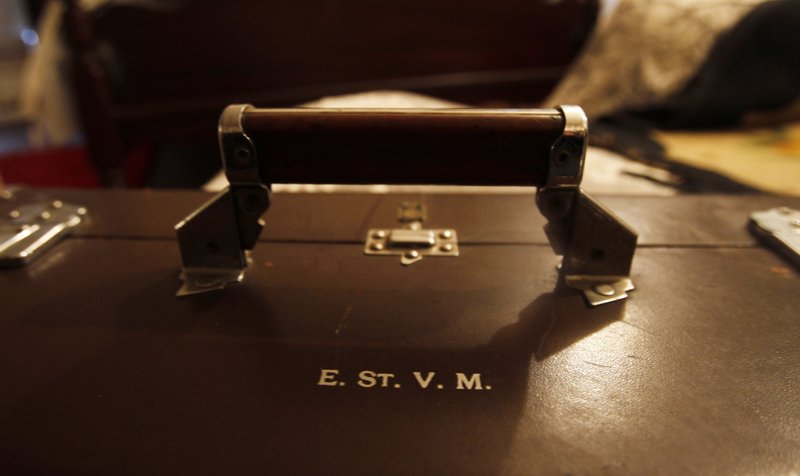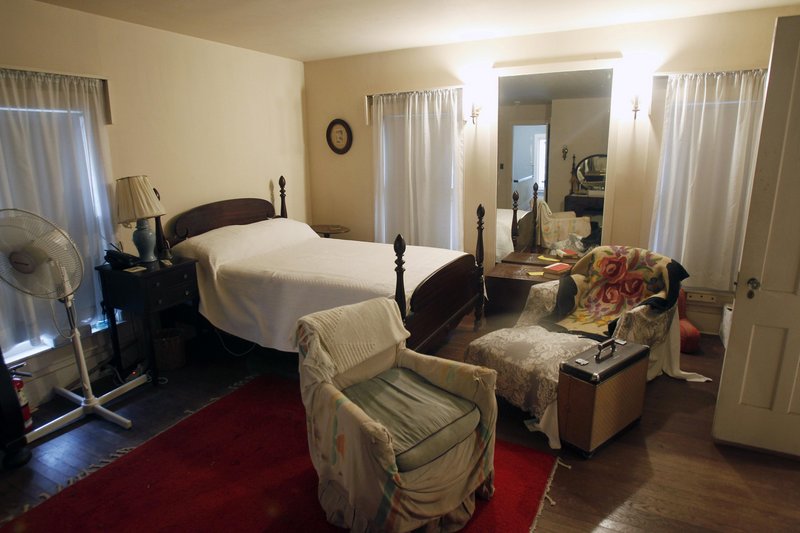– MICHAEL VIRTANEN
The Associated Press
AUSTERLITZ, N.Y. – The path rises through hardwood forest to the poet’s grave, in a small clearing with a bench that invites contemplation. It’s a short walk, maybe a half-mile from the country road high on the Taconic Ridge.
Edna St. Vincent Millay wrote here and walked these hills for 25 years as she lived out her life at Steepletop, once a 700-acre private preserve of music, gardens, cocktails, dramatics and the bohemian lifestyle for which the poet was known.
Now for the first time, the Millay Society plans to open Millay’s home at Steepletop to the public, with tours starting May 28. The walk to Millay’s gravesite, which is lined with several passages of her poetry, has been open since 2003, but the white farmhouse where she lived has been closed except for special events or by appointment.
Millay and her husband, Eugen Boissevain, moved in 1925 to the ridge in Austerlitz overlooking the upper Hudson Valley to the west and the Berkshire Mountains of Massachusetts just a few miles to the east. She’d already won the Pulitzer Prize and became a major celebrity with cross-country tours and readings that attracted large audiences.
In the autumn of 1950, Millay was found dead at the bottom of the farmhouse stairs. She was 58, childless, recently widowed. Her sister Norma Ellis lived there for the next three decades, but kept Millay’s things largely undisturbed.
Society Executive Director Peter Bergman said the $15 tour will feature Millay’s private suite on the second floor of the farmhouse, including her bedroom and work room and library, with the rooms much as the poet left them. Restoration work is planned on the lower floor. Visitors will be able to walk the 191-acre grounds, which include a pool, patio and bar that later fell into disrepair.
David Walsh visited the grounds with friends last year and had a picnic. “In the old days, graveyards used to be parks where they used to have picnics,” said Walsh. “We turned the picnic into a period piece that tried to represent who she was and how she lived during her romantic days, which were the ’30s and ’40s.
“It did create an interesting aura. We held glasses of champagne and toasted to her life.”
Walsh added that “the word bohemian is always used when you talk about her and her parties. It may be overwrought, but it probably applies well to that setting and the outside pool and the outside bar. It clearly looked like a place where the adults played games.”
Millay also wrote romantic poetry and sonnets. She grew up in Camden, Maine, where a poetry reading at a hotel led to her literary career. Before moving to Steepletop, she lived in Manhattan’s Greenwich Village, where friends included the playwright Eugene O’Neill and journalist Jack Reed. There she wrote what may be her most famous lines:
“My candle burns at both ends;/ It will not last the night;/ But ah, my foes, and oh, my friends– /It gives a lovely light!”
In 2006, 230 acres of the Steepletop estate were sold to New York by the Millay Society to become part of a state forest preserve. Her sister used another piece to establish an artist colony in the 1970s.
Send questions/comments to the editors.




Success. Please wait for the page to reload. If the page does not reload within 5 seconds, please refresh the page.
Enter your email and password to access comments.
Hi, to comment on stories you must . This profile is in addition to your subscription and website login.
Already have a commenting profile? .
Invalid username/password.
Please check your email to confirm and complete your registration.
Only subscribers are eligible to post comments. Please subscribe or login first for digital access. Here’s why.
Use the form below to reset your password. When you've submitted your account email, we will send an email with a reset code.